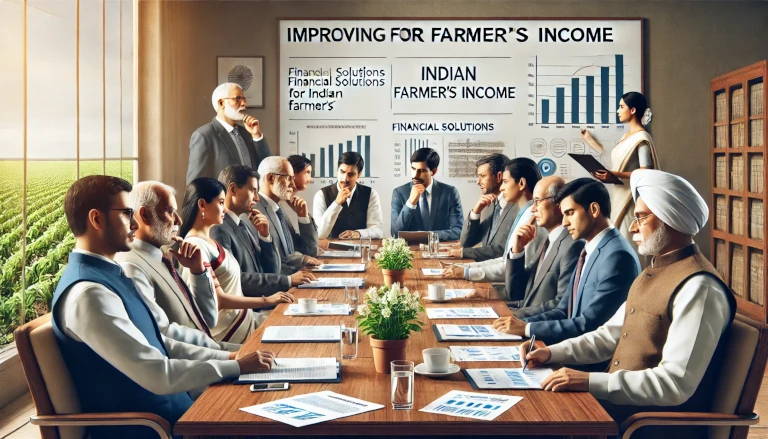The Swaminathan Committee Report is a landmark document in Indian agriculture, addressing key issues related to farmer welfare, food security, and agricultural sustainability. Formed in 2004 under the leadership of Dr. M S Swaminathan, the committee submitted five reports between 2004 and 2006, detailing various measures to improve farmers’ income and strengthen India’s agricultural system. This comprehensive guide explores the Swaminathan Committee Report’s recommendations, the challenges of implementation, and its profound implications on Indian agriculture.
What is the Swaminathan Committee Report? 📑
The Swaminathan Committee, also known as the National Commission on Farmers (NCF), was established by the Government of India to find sustainable solutions for Indian agriculture. Chaired by Dr. M S Swaminathan, the committee focused on measures to ensure a fair income for farmers and long-term food security for the country. The committee’s findings were aimed at uplifting small and marginal farmers, improving productivity, and enhancing the sustainability of agricultural practices.
Key Objectives:
- Ensure Food and Nutritional Security: Focus on food availability, accessibility, and quality to combat hunger and malnutrition.
- Increase Farmers’ Income: Recommend policies to ensure fair and remunerative prices for farmers.
- Sustainable Farming: Promote eco-friendly agricultural practices to conserve natural resources.
Why Was the Swaminathan Committee Report Created? 🌱
The committee was formed in response to growing agrarian distress in India. Issues such as low productivity, market fluctuations, and farmer suicides were widespread, necessitating reforms to address these crises. The Swaminathan Committee sought to identify and recommend farmer-centric policies to improve the socio-economic conditions of Indian farmers and boost agricultural productivity sustainably.
Key Recommendations of the Swaminathan Committee Report 📝
The Swaminathan Committee made several recommendations focusing on farmers’ income security, credit availability, sustainable practices, and price stability. Here are some of the critical suggestions:
1. Minimum Support Price (MSP) 📊
The committee proposed that MSP should be at least 1.5 times the cost of production. This recommendation aims to secure fair returns for farmers, thus helping them recover their investments and gain a reasonable profit margin.
2. Land Reforms 🏞️
Encouraged equitable distribution of land and access to land for marginalized farmers. The committee recommended implementing land banks and updating land records to help farmers secure loans.
3. Credit and Insurance 💳
Suggested enhancing credit availability to small and marginal farmers through low-interest loans and developing a more effective crop insurance system to mitigate losses due to crop failure or natural disasters.
4. Climate-Resilient Agriculture 🌍
Proposed the adoption of climate-resilient crop varieties to counteract the impact of climate change on agriculture. Recommended increased investment in agricultural research and extension services to educate farmers on resilient farming methods.
5. Revamping Irrigation Facilities 💧
The report stressed improving irrigation infrastructure to provide adequate water for all cultivable lands, especially in rainfed regions, and suggested investing in efficient irrigation techniques like drip and sprinkler systems.
How Has the Swaminathan Report Impacted Farmers? 🚜
While the Swaminathan Committee Report has not been fully implemented, it has sparked critical discussions on farmer welfare and agricultural reforms. Partial implementation has been seen through increased focus on MSP and loan waiver schemes, but challenges remain.
Benefits Observed:
- Increased Awareness of MSP: Farmers are more aware of their rights to fair prices, advocating for higher MSPs aligned with production costs.
- Policy Focus on Marginal Farmers: The report has directed policy attention towards small farmers and the need for land reform.
Challenges:
- Incomplete Implementation: Most recommendations, particularly the 1.5x MSP, have not been universally implemented, limiting their impact.
- Economic Viability: Full implementation requires substantial financial resources, posing challenges for government budgets.
Financial Challenges in Implementing the Report 💸
Implementing the Swaminathan Committee’s recommendations fully would require significant investment. The key financial challenge lies in providing a higher MSP, which would necessitate substantial government subsidies.
Cost Implications:
- Increased MSP: Setting MSP at 1.5x production cost could strain government finances, as it would mean raising prices and increasing subsidies for procurement.
- Land Reform and Credit Support: Providing equitable access to land and affordable credit requires policy overhauls and increased funding for rural financial institutions.
Political and Economic Challenges of the Swaminathan Report 🛑
The Swaminathan Committee Report faced political hurdles, as implementing the recommendations could affect fiscal budgets and involve large-scale policy changes. Additionally, opposition from market-oriented policymakers and concerns about rising food prices have been major obstacles.
Political Adversaries:
- Political Opposition: Some policymakers are concerned that higher MSP could lead to inflation and disrupt food prices.
- Resistance from Large Farmers: Land reforms may face resistance from larger landholders who benefit from the current system.
Economic Implications:
- Inflation Risks: Raising MSP could lead to higher food prices, affecting consumers and potentially leading to inflation.
- Budget Constraints: Full implementation would increase government spending, which may not be feasible given budget limitations.
Benefits of Implementing the Swaminathan Committee Report 🌾
If fully implemented, the Swaminathan Report could provide transformative benefits for Indian agriculture:
- Increased Farmer Income: Higher MSPs would secure better returns, enabling farmers to invest in quality seeds, equipment, and better farming practices.
- Reduction in Farmer Suicides: With better income and crop insurance, the financial strain on farmers would reduce, helping address the issue of farmer suicides.
- Sustainable Agriculture: Climate-resilient practices recommended by the committee would lead to long-term agricultural sustainability, helping India tackle challenges posed by climate change.
Limitations and Challenges of the Swaminathan Report ⚖️
While the report offers impactful recommendations, there are limitations in fully implementing its suggestions:
- Financial Burden: High fiscal cost may make it challenging for the government to implement all recommendations.
- Infrastructure Requirements: Improved irrigation facilities and credit systems require infrastructure development, which can be a slow and costly process.
- Market Dynamics: Higher MSPs could disrupt market prices, leading to inflation and economic imbalance.
The Future of the Swaminathan Committee Report 📈
The Swaminathan Committee Report continues to be a significant reference point in India’s agricultural policy discussions. Although fully implementing the report remains a challenge, partial adoption of its recommendations has driven positive changes in farmer income and agricultural sustainability. Moving forward, balanced strategies focusing on financial support and sustainable farming are crucial to achieving the report’s vision of a self-reliant, farmer-friendly agriculture sector.
The Swaminathan Committee Report offers critical insights into sustainable agriculture and farmer welfare, aiming to transform Indian farming through policy reforms. 🌾
Read this in Marathi at स्वामिनाथन समिती अहवाल आणि भारतीय शेतीवरील परिणाम
Discover more from Green Ecosystem - Renewable Energy, Agriculture, and Environmental Sustainability
Subscribe to get the latest posts sent to your email.


